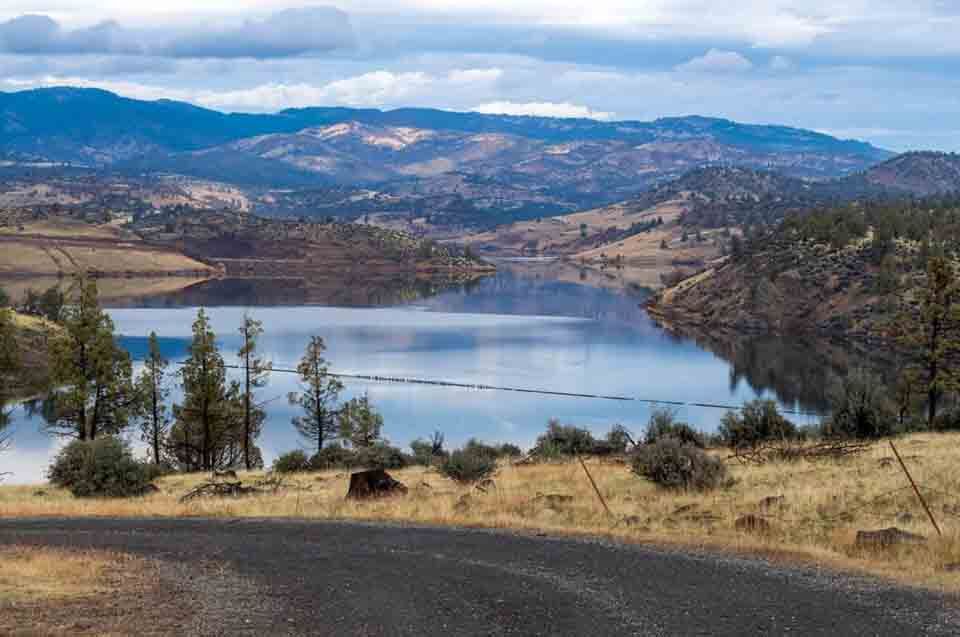Klamath Dam Removal: Loss of Copco Lake Leaves Some Residents Reeling

KLAMATH COUNTY, Ore. — The dam removal projects- aimed at sustaining the salmon population, are underway, with the latest drawdown being three reservoirs on the Klamath River. The removal process has already dramatically changed the landscape in Southern Oregon and far Northern California, along the course of the river.
The lowest of the three remaining dams- Iron Gate, was initially breached on January 9, followed by the J.C. Boyle reservoir on January 16. A concrete plug in the tunnel at the base of Copco 1 was blasted away on January 23, with the reservoirs draining quickly, leaving vast expanses of fissured mud that was the consistency and color of chocolate cake batter.
Shaping its new course, the Klamath River is winding through the bare landscape, but the transformation has had some unintended consequences and saddened some residents.
Water Quality Decline Below Iron Gate
Below Iron Gate- the farthest downriver dam, the influx of fine sediment and dead algae carried downriver in the Klamath has impaired the water quality of the river. Depleted oxygen levels soon started recovering according to a KRRC Facebook post.
Geoscientist for Resource Environmental Solutions (RES), Dave Coffman confirmed that this is a temporary effect of the project, which will be a beneficial part of the river recovery process. He said, “Rivers are made to transport sediment; all we did was remove the impediments to sediment transport.” But because conditions are unsafe at the moment, RES pulled back to give the sediments a chance to firm up a bit.
Flows in the Klamath River are down, which is one of the reasons why it drained so fast according to Ren Brownell, spokesperson for Klamath River Renewal Corporation (KRRC). Realizing that they could be facing drought conditions last November, some water was banked. Once this banked water was used up, the rest of the lake drained very quickly.
The speed of drawdown hampered crews assisting with the planned sediment evacuation. KRRC says the strategy should keep the slopes around homes near the former lakeshore stable. On Copco Lake – located about 90 miles south of Crater Lake and about 50 miles east of Ashland – and along Copco Road at Iron Gate Reservoir the Yurok Tribe has deployed drones to monitor the stability of the slope below the homes.
Effects Of The Copco Lake Drawdown
One of the residents of the Copco Lake community in California, April Sears, said that last week was horrible. They lost the lake, which Sears says felt like losing a best friend. Then she lost water in a rented home on Patricia Avenue. KRRC is putting her up in an Ashland hotel while they resolve the issue and have installed an above-ground tank to furnish 11 homes with potable water after their shared well failed.
But for many, the worst part of the drawdowns has been the impact on the wildlife they have come to know and love. Dead fish were seen stranded in the mud, and on Jan. 27, a doe and yearling became hopelessly stuck trying to reach water. Hornbrook Fire Protection District Volunteer firefighters made attempts to rescue them but- as dusk fell, the mission was abandoned and a California Department of Fish and Wildlife officer euthanized the deer.
Two days later, a group of eight deer trapped in the mud, were spotted by residents, but they had already died. Information officer at CDFW- Peter Tira, said they are installing temporary fencing in areas where deer may attempt to cross the drained reservoirs, and reflective devices to steer the animals away from hazardous sections. He said, “We are going to deploy additional staff to the area to keep a watch on things.”
The CDFW did have emergency response plans for wildlife in place, but- according to Tira, these plans concentrate more on specific species such as the golden and bald eagles, and the western pond turtles which are listed as a species of special concern in California. They did not anticipate the deer problems, as the drawdown is unprecedented. This is the biggest dam removal project that has ever been undertaken in American history, with a lot of unforeseen consequences.
Residents are also anxious to see how the migratory birds- who use the lake as a refuge, react when they return, only to find no lake. The Hornbrook Fire District has acquired some specialized equipment for mud, water, and ice rescues and the CDFW will rescue animals when it’s safe to do so. They warned that people who see a distressed animal should call CDFW and should not attempt to rescue the stranded wildlife on their own.
Crews from RES are already actively planting seedlings and acorns in all three reservoir footprints, and planting will continue through the year. Copco Lake resident and fire chief for the community’s volunteer fire department, Francis Gill, confirmed that the reveg crew is backing the seed planting, and is looking forward to seeing things start sprouting in spring.
